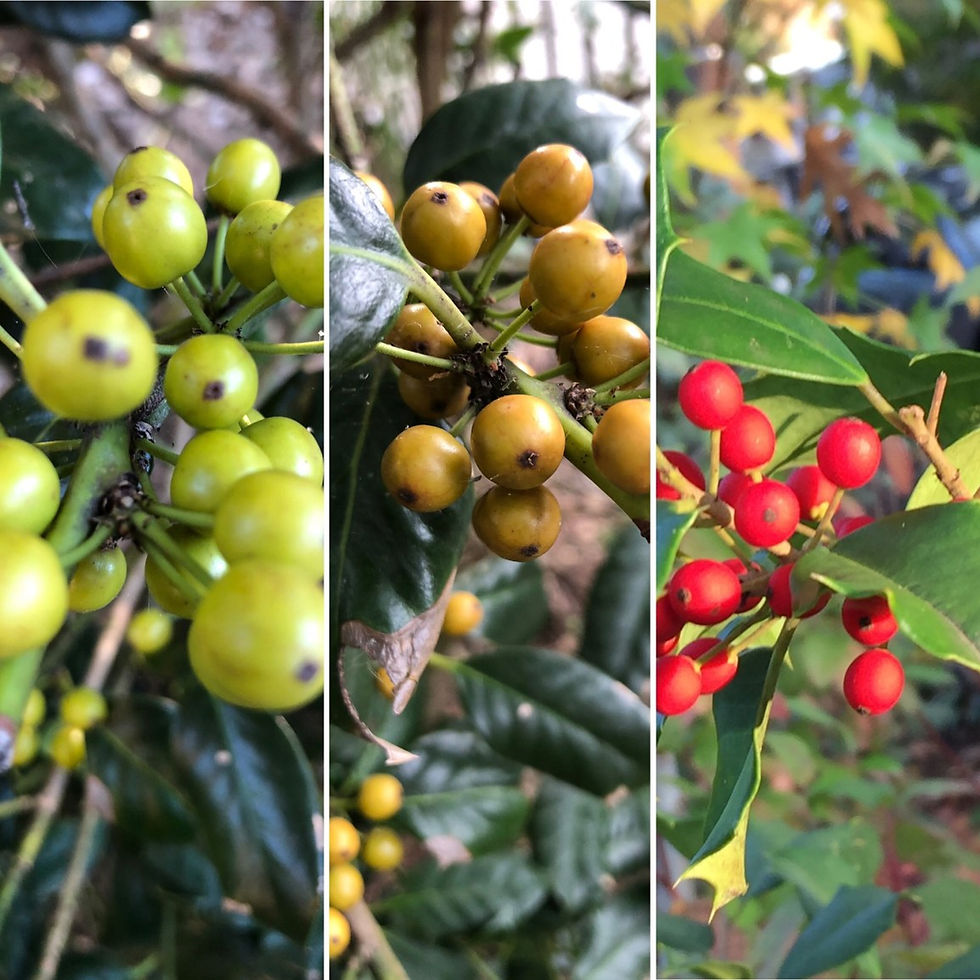Hollies: Plant This or That
- Nuts for Natives
- Nov 27, 2018
- 2 min read
Updated: Jul 13, 2020

Autumn brings the evergreen unveiling. As leaves fall, it seems as if evergreens magically appear front and center in the landscape. Trees and shrubs that were backgrounders during warmer months are now “bones” giving the garden structure. In our area, hollies are easy to care for evergreens offering lots in the habitat department. There are a number of hollies out there … Japanes (Ilex × aquipernyi ‘Meschick’ Dragon Lady) on the left above … but the best for our area are American hollies (Ilex Opaca) shown above on the right and below.

The American holly is just what you think it would be – an evergreen tree with presence offering clusters of bright red berries that feed birds through February, and sometimes March, in our garden. Not to worry; they don’t all have the presence of this 140 year old tree at Mt. Vernon! The Missouri Botanical Garden’s plant finder lists 17 varieties of American holly, many much smaller than the Mt. Vernon holly at maturity. There is also the smaller yaupon holly (Ilex vomitoria), that grows to 20 feet or so and is native.

The berries emerge green and ripen throughout the Fall. Hollies are great as a screen, a specimen tree or to anchor a bed. They thrive in full sun or partial shade. If you are using American holly as a foundation plant, please be sure to plant with the mature height and width in mind. Hollies can be contained through pruning but it is an effort. Best to plant the tree in the right spot the first time … sometimes I need to remind myself of that!
With hollies, going native is an easy choice. Most holly trees offer hardy evergreen foliage, bright berries and can serve as a focal point or a background evergreen. All of those attributes are abundant in native hollies.
For more information:
More about american hollies here.















Comments